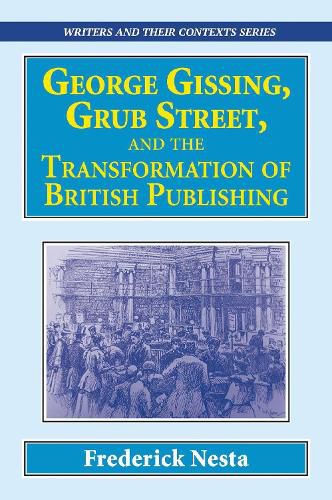Readings Newsletter
Become a Readings Member to make your shopping experience even easier.
Sign in or sign up for free!
You’re not far away from qualifying for FREE standard shipping within Australia
You’ve qualified for FREE standard shipping within Australia
The cart is loading…






This title is printed to order. This book may have been self-published. If so, we cannot guarantee the quality of the content. In the main most books will have gone through the editing process however some may not. We therefore suggest that you be aware of this before ordering this book. If in doubt check either the author or publisher’s details as we are unable to accept any returns unless they are faulty. Please contact us if you have any questions.
There are histories of major publishing houses and biographies of major authors, but this is the only work that uses the publishing career of a respected and professional ‘mid-list’ author as a case study of this period of great change.
George Gissing (1857-1903), author of a series of important novels, is best known for New Grub Street (1891), which concerns itself with the plight of an author of much talent but little success. It is a critically esteemed picture of publishing and the world of books at a time of dramatic transformations.
Professor Nesta’s new work examines that commerce the production, distribution, and economics of literature, and, perhaps most importantly from a human standpoint, the financial rewards of literature to the people who produced it, in relation to the life of one late Victorian author. His study will be of value to book historians, literary scholars interested in the Victorian period, those concerned with the historical economics of publishing, copyright, literary agents, advertising, Victorian serials, and circulating libraries.
The facts connected with the production and distribution of books, though little heeded by the public are, nevertheless, of great social and political, as well as literary importance. So wrote John Chapman in the April 1852 Westminster Review article entitled ‘The Commerce of Literature’.
The period from 1880 to 1900 saw tremendous changes in British publishing. When Dickens died in 1870 and when Gissing published his first novel in 1880 publishing was still following a set model of publishing three-volume novels for circulating libraries. There was then little or no use of literary agents, no American copyright protection for British authors, and the ‘norm’ for authors was outright sale of copyright instead of advances against royalties. By the time Gissing died in 1903 the basics of modern publishing were in place: international copyright agreements, complex contracts with foreign rights stipulated, the rise of literary agents, the death of the three-volume novel, the end of the dominance of circulating libraries, the use of typewriters and telephones and telegraph, and the growth of a larger reading public.
$9.00 standard shipping within Australia
FREE standard shipping within Australia for orders over $100.00
Express & International shipping calculated at checkout
This title is printed to order. This book may have been self-published. If so, we cannot guarantee the quality of the content. In the main most books will have gone through the editing process however some may not. We therefore suggest that you be aware of this before ordering this book. If in doubt check either the author or publisher’s details as we are unable to accept any returns unless they are faulty. Please contact us if you have any questions.
There are histories of major publishing houses and biographies of major authors, but this is the only work that uses the publishing career of a respected and professional ‘mid-list’ author as a case study of this period of great change.
George Gissing (1857-1903), author of a series of important novels, is best known for New Grub Street (1891), which concerns itself with the plight of an author of much talent but little success. It is a critically esteemed picture of publishing and the world of books at a time of dramatic transformations.
Professor Nesta’s new work examines that commerce the production, distribution, and economics of literature, and, perhaps most importantly from a human standpoint, the financial rewards of literature to the people who produced it, in relation to the life of one late Victorian author. His study will be of value to book historians, literary scholars interested in the Victorian period, those concerned with the historical economics of publishing, copyright, literary agents, advertising, Victorian serials, and circulating libraries.
The facts connected with the production and distribution of books, though little heeded by the public are, nevertheless, of great social and political, as well as literary importance. So wrote John Chapman in the April 1852 Westminster Review article entitled ‘The Commerce of Literature’.
The period from 1880 to 1900 saw tremendous changes in British publishing. When Dickens died in 1870 and when Gissing published his first novel in 1880 publishing was still following a set model of publishing three-volume novels for circulating libraries. There was then little or no use of literary agents, no American copyright protection for British authors, and the ‘norm’ for authors was outright sale of copyright instead of advances against royalties. By the time Gissing died in 1903 the basics of modern publishing were in place: international copyright agreements, complex contracts with foreign rights stipulated, the rise of literary agents, the death of the three-volume novel, the end of the dominance of circulating libraries, the use of typewriters and telephones and telegraph, and the growth of a larger reading public.